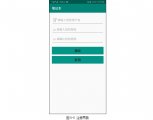基于安卓Android的便签笔记APP设计(Android studio)
来源:56doc.com 资料编号:5D20554 资料等级:★★★★★ %E8%B5%84%E6%96%99%E7%BC%96%E5%8F%B7%EF%BC%9A5D20554
资料以网页介绍的为准,下载后不会有水印.资料仅供学习参考之用. 密 保 惠 帮助
资料介绍
基于安卓Android的便签笔记APP设计(Android studio)(论文9000字,程序代码)
摘要:本文介绍了便签的发展史、基础操作流程以及便签的具体功能,提出了基于Android的便签APP设计构想;制定了设计开发方案,拟定了详细的系统设计开发方法,包括便签APP详细的系统设计、对数据库的设计以及便签APP的总体结构等;给出了系统的总体设计,并对便签进行具体实现。对便签的各项功能进行说明、并对各个操作界面进行设计和实现,分析了系统的优势与不足以及下一步要进行的工作。系统环境采用的是由SQLite创建数据库,以Android Studio为开发工具,以Android为编程语言,实现基于Android技术的便签APP的设计与开发过程。总的来说,本文设计和实现的基于Android的应用软件易于使用,具有较高的实际应用价值。
关键词:便签;Android;Android Studio;SQLite
Design and Implementation of Android-based Note APP
Abstract:This paper introduces the development history of note, the basic operation process and the concrete function of the note, puts forward the design conception of the Android-based APP, and formulates the design and development schemes, including the feasibility analysis,including the detailed design of the note, the database design and the overall structure of the APP. The overall design of the system is given, and the implementation of the note is carried out. The functions of the note are explained and the interface is designed and realized. The advantages and disadvantages of the system and the next work are analyzed. In the system environment, SQLite is used to create database,development tool is Android Studio,programming language is Android, and the design and development process of APP based on Android technology is realized. In general, the Android-based application software designed and implemented in this paper is easy to use and has high practical application value.
Key words: note; Android; Android Studio;SQLite
需求分析
便签APP的主界面按钮编辑功能,编辑功能就是对便签进行操作。包括对便签的增加、删除、修改;搜索,对现有的已经存在的同个类型下的便签进行关键字搜索的操作;设置,对便签的操作方式和页面布局进行设置,同时还包括将当前类型的便签清空的功能;排序方式,对同个类型下的便签进行排序,可以按创建时间、最新的编辑时间和标题的名称即标题的拼音先后顺序;清空当前所有的便签。
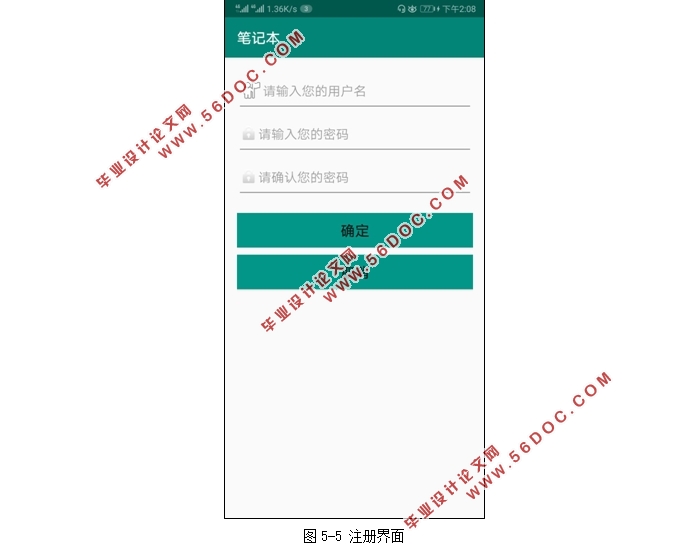
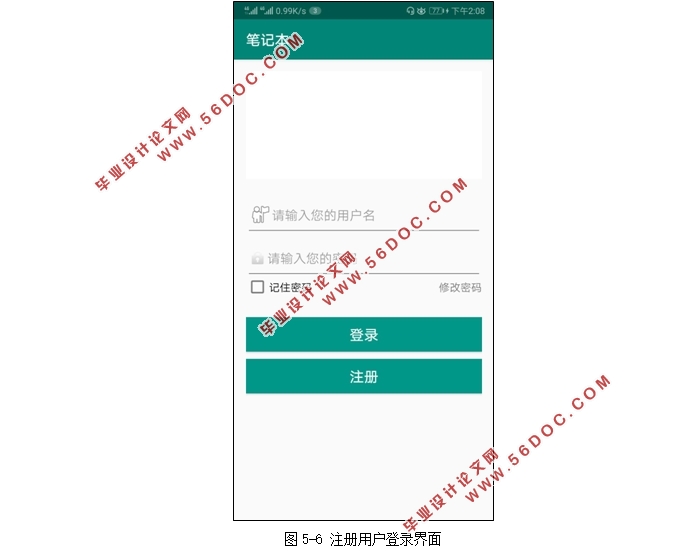
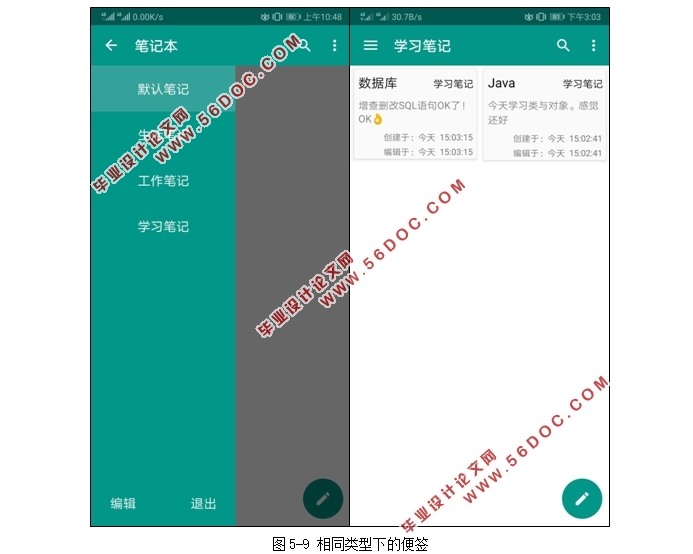
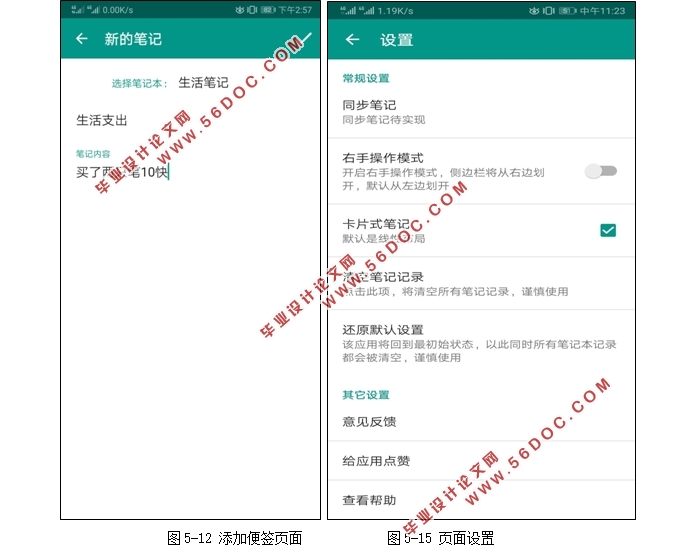
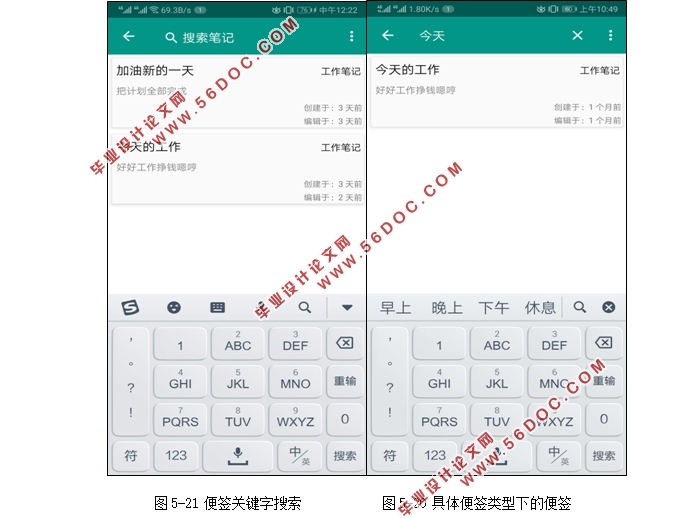
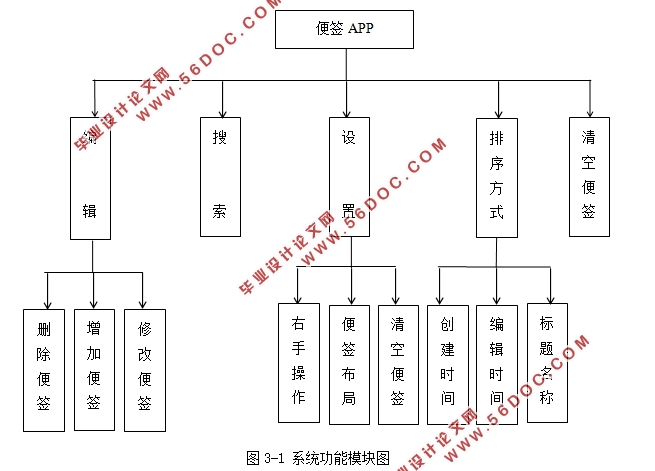
目 录
1 绪论 1
1.1 开发背景 1
1.2 开发目的和意义 1
2 相关技术及开发平台 2
2.1 开发工具的介绍 2
2.2 Android平台简介 2
2.2.1 Android的基本框架 2
2.2.2 Android应用程序结构 3
2.3 Android Studio 4
2.4 SQLite 5
3 系统分析 6
3.1 系统的可行性分析 6
3.2 软件目标 6
3.3 需求分析 6
3.4 系统流程分析 7
4 系统设计 9
4.1 系统详细设计 9
4.2 数据库设计 9
4.3 系统的总体设计 9
5 系统实现 12
5.1 项目总体结构 12
5.2 系统实现 14
6 总结 27
6.1 完成的工作 27
6.2 展望 27
参考文献 29
致谢 30
|
